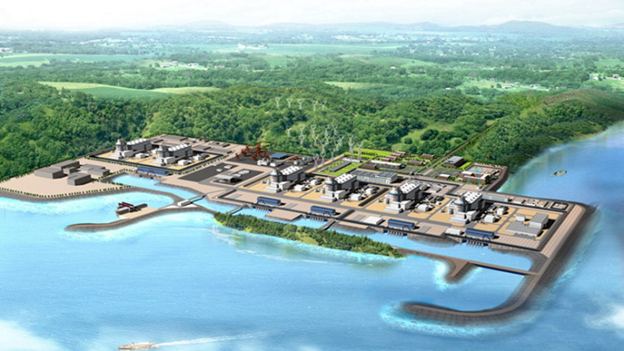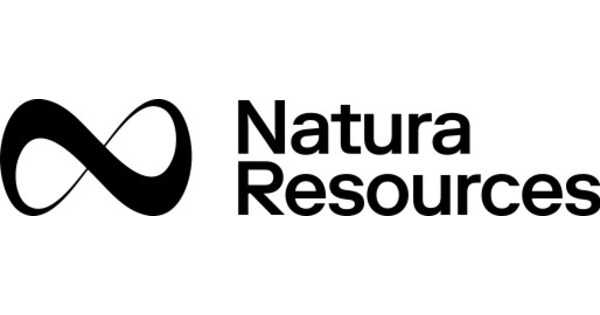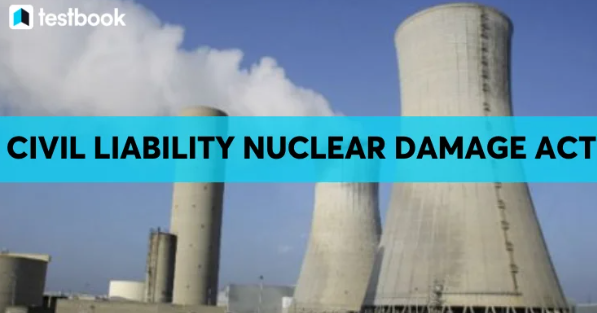Moltex’s WATSS process for converting used uranium oxide fuel into molten salt reactor fuel has been validated on spent nuclear fuel from a commercial nuclear reactor.
WATSS is short for Waste to Stable Salt. The innovative process extracts valuable materials and radioactive byproducts from spent nuclear fuels in oxide form, including CANDU, light water reactor and certain fast reactor fuels, such as mixed oxide (MOX) fuels. It does this in a single, streamlined twenty four-hour chemical process, with a pretreatment step that the company says can accommodate exotic, experimental, or advanced reactor fuels.
The extracted transuranic elements are concentrated to produce molten salt fuel. Fission byproducts are removed. This process reduces waste volumes dramatically but also transforms nuclear waste into clean, dispatchable energy. This permanently eliminates long-lived transuranic elements like plutonium, the company says. Coupled with Moltex’s Stable Salt Reactor-Wasteburner (SSR-W) reactor technology, the process enables the creation of a closed fuel cycle.
The WATSS process has now been validated on spent nuclear fuel bundles from a “commercial reactor in Canada” through hot cell experiments carried out by Canadian Nuclear Laboratories (CNL). CNL has the only facilities in Canada equipped to handle spent nuclear fuel. The experiments revealed that the process can extract ninety percent of the transuranic material from spent nuclear fuel in twenty-four hours, with greater efficiency over longer periods of time, the company said.
Rory O’Sullivan is the CEO of Moltex. He said, “It’s crucial that increased demand for nuclear energy is matched by increased back-end fuel cycle capabilities. WATSS is a transformative solution that not only reduces liabilities but also adds value, turning waste into a valuable energy asset.”
The company plans to deploy the first WATSS unit at NB Power’s Point Lepreau site in New Brunswick. It also plans to deploy the first SSR-W by the early to mid-2030s. In a recently released report on its work, Moltex said the commercial-scale demonstration facility will recycle an anticipated two hundred and sixty thousand spent nuclear fuel bundles from existing Candu pressurized heavy water reactors and create recycled fuel for the entire sixty-year operating life of one three-hundred megawatt demonstration SSR-W.
The development of WATSS has received funding from the Government of Canada, the Province of New Brunswick, and NB Power. Indigenous communities in New Brunswick are also supporting the technology and have invested in its development.
The North Shore Mi’kmaq Tribal Council and its seven First Nation member communities announced in 2023 that it would be taking a stake in both Moltex Energy Canada Inc and ARC Clean Technology Canada Inc. It has recently signed a memorandum of understanding (MoU) to promote the selection and deployment of Westinghouse technology for nuclear new build projects in New Brunswick.
Jim Ward is the General Manager of the North Shore Mi’kmaq Tribal Council. He said that the Council’s investment in Moltex was driven by the potential to make nuclear power more sustainable and reduce nuclear waste liability. He added that “Moltex also engaged with us at the earliest stages of the project. We are pleased to see this important milestone being met and look forward to more to come.”
Category: Nuclear Reactors
-

Nuclear Reactors 1484 – Moltex Working On The Recycling Of Spent Nuclear Fuel To Fuel Molten Salt Reactors
-

Nuclear Reactors 1483 – Fortum Is Working On The Creation Of A Digital Twin For The Steady Energy LDR-50 Reactor
Fortum is a Finnish state-owned energy company located in Espoo, Finland. It mainly focuses on the Nordic region. Fortum operates power plants, including co-generation plants, and generates and sells electricity and heat.
Fortum has agreed to assist the development of Finnish technology company Steady Energy’s district heating nuclear reactor with its simulation expertise. The intent is to create a comprehensive digital twin for Steady Energy’s LDR-50 reactor using Apros software.
Steady Energy designs, builds, and operates compact, advanced nuclear heating plants. Their elegantly simple approach enables scalable, cost-effective, zero-carbon district heating almost anywhere.
Apros, the result of decades of development work by Fortum and Finland’s state-owned VTT Technical Research Centre, is an advanced software program for modelling and dynamic simulation of power plants, energy systems and industrial processes. Apros products and services have been sold in more than thirty countries around the world to a wide range of users including EPC project suppliers, equipment manufacturers, energy companies, engineering firms, research institutes and universities.
Fortum will use this software to create a simulation called a digital twin of the LDR-50 reactor to permit Steady Energy to carry out comparison analyses related to the licensing of district heating reactors in Finland. In addition, the Apros model will be used to provide solutions to technical problems related to the functionality and dimensioning of the new plant type.
Toni Salminen is Director of Sales at Fortum for Apros product area. He said, “We are very pleased that Steady Energy wants to use dynamic simulation to ensure their design quality and has chosen Fortum to support their project. The Apros software, developed jointly by Fortum and VTT, is suitable for the modelling needs of a nuclear power plant throughout the nuclear power life cycle, both for verifying the initial design material and for supporting the commissioning of the plant. For us, cooperation with Steady Energy offers an interesting opportunity to utilize our decades of power plant expertise in the development of new small-scale nuclear power.”
Tommi Nyman is the CEO of Steady Energy. He said, “For Steady Energy, this is a significant partnership and a great opportunity to utilize Fortum’s expertise in the development of a Finnish reactor.”
Steady Energy was spun out of VTT in 2023. It is developing the LDR-50 small modular reactor (SMR) with a thermal output of fifty megawatts, designed to operate at around three hundred degrees Fahrenheit. Unlike most small modular reactors being developed around the world, the LDR-50 is not designed to generate electricity or electricity and heat. Instead, it is designed to only produce heat and is focused on district heating, as well as industrial steam production and desalination projects.
Steady Energy has already signed agreements for fifteen reactors in Finland, with its reactor design currently being assessed by the Finnish Radiation and Nuclear Safety Authority (STUK). The aim is to construct the first plant to be the clean energy source for a district heating scheme. Work will begin in 2029.
In December of last year, Steady Energy signed a contract with Belgian engineering firm Tractebel to provide engineering services to develop its LDR-150 SMR. -

Nuclear Reactors 1482 – China Adds Two New Reactors To The Lufeng Nuclear Power Plant As It Expands Nuclear Power
China has begun the construction on its first nuclear reactor unit of the year with the pouring of first concrete at the Lufeng Nuclear Power Plant in Guangdong province. The milestone was completed on Monday. It marks the official start of the plant’s No. 1 reactor, which utilizes the CAP1000 third-generation pressurized water reactor (PWR) design. According to China General Nuclear Power Corporation (CGN), the CAP1000 design includes modular construction, digital building technologies, and automated welding to improve safety and efficiency.
As reported by China Daily, the plant will ultimately house six reactors, with Units 5 and 6 already under construction since 2022 and 2023, respectively. These last two units employ the Hualong One reactor which is based on China’s domestically designed third-generation nuclear technology.
When it is fully operational, the Lufeng nuclear power plant is expected to generate approximately fifty-two billion kilowatt-hours of electricity annually. This source of energy will help reduce China’s reliance on coal, saving an estimated sixteen million metric tons of standard coal per year. It will also cut carbon dioxide emissions by around forty-three million tons.
CGN emphasized that the Lufeng nuclear power plant project aligns with China’s commitment to reducing carbon emissions and will expand its clean energy infrastructure. CGN stated, “The official start of the main project of Unit 1 marks the full start of the construction of the dual third-generation nuclear power units of the Guangdong Lufeng Nuclear Power Project.”
The Lufeng nuclear power plant site was originally approved for four CAP1000 reactors by China’s National Development and Reform Commission in 2014. However, state approval for Units 1 and 2 was delayed until August 2023, while Units 3 and 4 are still waiting for final clearance.
The expansion of nuclear power in China is accelerating. The country approved the construction of ten nuclear power units annually over the past three years. with more nuclear power plants expected to break ground in the days ahead. By the end of 2025, China’s total installed nuclear capacity is estimated to reach sixty-five gigawatts, reinforcing its position as a world leader in nuclear energy development.
The CAP1000 reactor is a Chinese adaptation of the Westinghouse AP1000 reactor. It was developed by the Shanghai Nuclear Engineering Research and Design Institute. CAP1000 reactors feature passive safety systems and improved fuel efficiency, contributing to China’s strategy for sustainable nuclear power growth.
Meanwhile, Units 5 and 6 at the Lufeng nuclear power plant, which utilize the Hualong One reactor design, are scheduled for completion in 2026 and 2027. Hualong One is also known as HPR1000. It was developed jointly by CGN and China National Nuclear Corporation, further strengthening China’s independent nuclear technology capabilities.
The Lufeng project is one of several major nuclear initiatives currently underway in China. The Guangdong Lianjiang Nuclear Power Plant which began construction in July 2023, also features CAP1000 reactors, further reinforces the country’s commitment to nuclear energy expansion.
With ongoing investments in advanced nuclear technologies, China is securing its role as a leader in clean energy, reducing its reliance on fossil fuels, and meeting its carbon neutrality goals. -

Nuclear Reactors 1481 – Core Power Is Working On The Development Of Floating Nuclear Reactors
Core Power of the U.K. has announced that it will develop a “U.S.-based” maritime civil nuclear program that will “bring floating nuclear power to market by the mid-2030s”. Core Power plans mass production of floating nuclear power plants.
Launched during Core Power’s New Nuclear for Maritime summit in Houston, Texas, on February 12th of this year, the Liberty program “will lay the foundation for the use of nuclear power in the civil maritime sector”. the company said, “It will encompass modular construction of advanced fission technology and create the regulatory and supply chain frameworks necessary to enable this technology to be rolled out worldwide.”
The first phase of the program will see the mass production of floating nuclear power plants (FNPPs). The expertise gained in rolling out FNPPs on a large scale will pave the way for the second phase of the program, which will involve developing nuclear propulsion for civil ships.
Core Power said FNPPs will be constructed in shipyards on a modular production line, using well-established shipbuilding processes and an already-skilled workforce. They will be manufactured as power barges that can be moored at ports and coastal locations. Larger-capacity generation units will be anchored further offshore. A fleet of FNPPs can be mass produced and towed to customer locations without the need for complex site preparations, it said. A central yard will carry out commissioning, maintenance, refueling, and waste management. The Liberty program will utilize advanced nuclear technologies, such as molten salt reactors.
Core Power said, “The Liberty program envisions opening the orderbook for FNPPs in 2028 and reaching full commercialization by the middle of the next decade.” The company will select a location in the USA to construct the initial manufacturing yard for FNPPs.”
The second phase of the program will focus on developing the supply chain and workforce that will be needed. The third phase will include the development of business operations models and the creation of the manufacturing base. Simultaneously, Core Power plans to aid the development of international safety and security standards by collaborating with the International Maritime Organization and the International Atomic Energy Authority to create a civil liability convention for nuclear-powered ships.
The program, Core Power said, will also encompass creating the robust regulatory framework that will be necessary to operate FNPPs and civil vessels with nuclear propulsion. It will also include the supply chains (such as fuel and highly trained personnel) that will allow advanced nuclear reactors to function.
Mikal Bøe is the CEO of Core Power. He said, “The Liberty program will unlock a floating power market worth two trillion six hundred thousand dollars, and shipyard construction of nuclear will deliver on time and on budget. Given that sixty-five percent of economic activity takes place on the coast, this will allow nuclear power to reach new markets.”
Bøe added that “Core Power’s Liberty program will deliver resilient energy security for heavy industry and ocean transport. In doing so, it will revolutionize the maritime sector and transform global trade.”
In October of last year, Core Power announced that it had signed an agreement with the Mitsubishi Research Institute to research market conditions for a maritime civil nuclear program in Japan. -

Nuclear Reactors 1480 – Natura Resources and Texas A&M University Are Collaborating On The Deployment Of Molten Salt Small Modular Reactors in Texas – Part 2 of 2 Parts
Part 2 of 2 Parts (Please read Part 1 first)
Texas Governor Greg Abbott, in his State of the State Address on February 2, 2025, emphasized the importance of nuclear energy for Texas. He said, “It is time for Texas to lead the nuclear power renaissance in the United States.” This statement emphasizes the state’s commitment to advancing nuclear technology. It will position Texas as a leader in clean energy innovation. The 2024 Interim Report from the Texas Senate Committee on Water, Agriculture, and Rural Affairs mentioned Natura’s technology as a potential solution to power the state water plan, further validating the significance of these deployments.
The Texas Senate Committee on Water, Agriculture, and Rural Affairs, chaired by Senator Charles Perry, stated in the 2024 Interim Report that Natura’s advanced nuclear technology offers a promising solution to the state’s water and energy challenges. By integrating desalination with energy production, the new molten salt technology can ensure a sustainable future for Texas.
During the press event at Texas A&M in February, Representative Cody Harris said that advanced nuclear deployments, such as Natura’s deployment at the RELLIS, will have a positive impact not only Texas, but the rest of the World as well.
The deployments of advanced nuclear reactors are expected to have a profound impact on local communities. By providing a stable and reliable source of clean energy, these projects will facilitate economic growth and job creation in the regions. The integration of Natura’s MSR-100 technology with desalination systems will also address water scarcity. This will ensure that local communities have access to purified water for agricultural and other uses. This dual benefit of energy and water security will improve the quality of life for residents and contribute to the overall sustainability of the regions.
The need for reliable and abundant energy is critical for attracting and supporting business growth in Texas. With the increase of data centers, fabrication, and manufacturing facilities, the demand for electricity in Texas is surging. Texas’ business-friendly environment, combined with Natura’s advanced nuclear technology, will allow the state to meet this growing demand. By providing a stable and clean source of energy, the deployment of Natura’s reactors will support the expansion of data centers and other energy-intensive industries. Driven by economic development, Texas’ status will be established as a leader in the 21st-century economy.
For more information about Natura Resources and its role in developing small modular reactor technology, please contact Andrew Harmon or visit Natura Resources.
Natura Resources LLC is a leading advanced reactor developer who is committed to answering the world’s increased demand for reliable energy, medical isotopes, and clean water by developing commercially deployable molten salt reactors. Natura’s small modular reactors are liquid-fueled and molten salt-cooled. This increases their efficiency and reduces waste. The Natura MSR-100 reactor being deployed at Abilene Christian University is the first liquid-fueled reactor design to receive a construction permit from the U.S. Nuclear Regulatory Commission. In less than five years, Natura has established itself as a leading company in the nuclear industry, fueled by a commitment to performance. Natura’s leadership team has a track record of revolutionizing the energy industry with innovative technology and tangible results. Natura is privately owned and has secured over seventy-eight million dollars in funding through its first three investment rounds. -

Nuclear Reactors 1479 – Natura Resources and Texas A&M University Are Collaborating On The Deployment Of Molten Salt Small Modular Reactors in Texas – Part 1 of 2 Parts
Part 1 of 2 PartsNatura Resources (Natura) announces the deployment of two advanced nuclear projects in Texas, aimed at enhancing energy security and reliability for the rapidly growing state. These deployments are located in the Permian Basin and at Texas A&M University’s RELLIS Campus. They represent significant strides in addressing Texas’ energy and water needs. The Natura MSR-100 is a cutting-edge small modular reactor (SMR) that utilizes molten salt reactor (MSR) technology.Natura has entered into a Memorandum of Understanding (MoU) with Texas Tech University (TTU) and Abilene Christian University (ACU) to develop its molten salt reactor (MSR) technology. This collaboration includes the Texas Produced Water Consortium (TxPWC) at Texas Tech. It will focus on integrating MSR technology with water desalination systems. The goal of the collaboration is to provide a sustainable solution for water scarcity by purifying produced water from oil and gas operations, making it available for agricultural and other beneficial uses.Doug Robison is the Founder and CEO of Natura Resources. He emphasized the importance of this partnership, “Our collaboration with Texas Tech and ACU is a pivotal step in addressing Texas’ critical water and energy challenges. By leveraging our MSR technology, we aim to secure crucial water resources and drive innovation in clean energy.”Natura is also partnering with Texas A&M University to deploy the Natura MSR-100 reactor at the RELLIS Campus. This initiative is part of a project known as “The Energy Proving Ground,” which involves multiple nuclear reactor companies. The project intends to bring commercial-ready small modular reactors (SMRs) to the site. They will provide a reliable source of clean energy for the Electric Reliability Council of Texas (ERCOT).Doug Robison highlighted the significance of this deployment. He said “We are thrilled to continue our partnership with Texas A&M University to showcase how our technology can meet the energy needs of Texas and the nation. The Natura MSR-100 at the RELLIS Campus will play a crucial role in advancing our clean energy mission.”The Natura MSR-100 is a cutting-edge small modular reactor (SMR) that is based on molten salt reactor (MSR) technology. Two research MSRs operated in the United States in the mid-20th century. The 1950s Aircraft Reactor Experiment (ARE) was primarily motivated by the technology’s compact size, while the 1960s Molten-Salt Reactor Experiment (MSRE) aimed to demonstrate a nuclear power plant using a thorium fuel cycle in a breeder reactor.These are the key features of the Natura MSR-100.The Natura MSR-100 reactor utilizes a liquid fuel composed of fissile uranium material dissolved in a molten salt mixture. This fuel enhances safety and efficiency and produces less long-lived radioactive waste.The Natura MSR-100 reactor operates at temperatures exceeding one thousand one hundred and twelve degrees Fahrenheit, which improves thermal efficiency and electricity generation.The Natura MSR-100 reactor operates at lower pressures and includes passive safety mechanisms that reduce the risk of accidents.The high-temperature heat generated by the Natura MSR-100 can be used for desalination, providing a sustainable source of clean water.Please read Part 2 next -

Nuclear Reactors 1478 – Texas A&M University Will Host Small Modular Reactor Clusters Constructed By Four SMR Companies
It was announced last Tuesday that four small-scale nuclear reactors are to be hosted on Texas A&M University land. CEOs from four nuclear power companies have agreed to work with the Texas A&M System to develop prototype and commercial-ready “small modular reactors” (SMRs). The first SMR has the potential to be constructed within five years.
Smaller than their traditional commercial nuclear reactors counterparts, SMRs are designed so that their components can be factory-built and assembled at their site of use. They could be particularly useful for remote locations, for industrial applications and powering facilities like data centers.
Texas A&M says that its accommodation of the reactors will provide the “missing element” needed to bring more nuclear power to Texas. “Plain and simple: the United States needs more power” said Texas A&M Chancellor John Sharp in a statement. “Nowhere in the country, other than Texas, is anyone willing to step up and build the power plants we need. Thanks to the leadership of Gov. Greg Abbott and others in Texas state government, Texas A&M System stands ready to step up and do what is necessary for the country to thrive.” The four SMRs will be built at Texas A&M-RELLIS, a twenty-four-hundred-acre technology and innovation campus in Bryan, Texas.
According to the university, reactor manufacturers had been struggling to find sites to build clusters of the small-scale fission reactors. Power generated at this “Energy Proving Ground” could be used to increase the supply of the Electric Reliability Council of Texas (ERCOT). The university has projected that the four reactors built at the site will have a combined electrical output of more than one gigawatt. This is equivalent to a full-sized nuclear power reactor.
The companies involved in the collaboration are Aalo Atomics, Kairos Power, Natura Resources and Terrestrial Energy.
Matt Loszak is the co-founder and CEO of Aalo Atomics. He said, “We are excited to partner with an innovation leader like the Texas A&M System, and to jointly help shape the future of energy while creating opportunities for research, education and the Texas economy.” Aalto Atomics intends to build up to six “pods” at the Texas A&M–RELLIS site. Each pod will contain multiple reactors with each reactor having a ten-megawatt output. For comparison, a regular-sized commercial nuclear reactor typically has an output of around one thousand megawatts. Loszak added, “This collaboration is a pivotal step for Aalo as it provides us with a platform to demonstrate the potential of our factory mass-manufactured nuclear technology to deliver reliable, clean energy that will ultimately power the next generation of data centers and AI infrastructure.”
Joe Elabd is the Texas A&M vice chancellor for research. He said, “The Energy Proving Ground will allow these companies to safely test their SMRs and set the stage for deploying small nuclear reactors across the country. The agreements that the Texas A&M System has with Kairos, Natura, Terrestrial and Aalo are going to change the energy landscape for the whole country. The Energy Proving Ground will allow these companies to safely test their SMRs (small modular reactors) and set the stage for deploying small nuclear reactors across the country.”
Texas A&M -

Nuclear Reactors 1478 – India Is Working On Major Expansion Of Nuclear Power – Part 2 of 2 Parts
Part 2 of 2 Parts (Please read Part 1 first)
India alone plans to bring onstream an additional fourteen gigawatts of conventional nuclear capacity by 2032. By 2033, India wants to build five indigenously developed small modular reactors. These could fill niche power requirements although their contribution to total power generation would be modest.
India’s nuclear power industry is now being opened up to private-sector capital both at home and from abroad.
India paved the way for a nuclear energy partnership with the U.S. in a landmark deal twenty years ago. The two countries agreed in 2019 to build six U.S. nuclear power plants in India.
Those power plants never got built, in part due to issues surrounding India’s liability law. However, the U.S. government has recently begun removing roadblocks to forge deeper energy ties with New Delhi.
On the domestic front, Indian major utility companies including Tata Power, Vedanta, Reliance Industries have already held preliminary talks.
There is a lot of ground for nuclear power to make up in India, however, and it may remain below its targets into the next decade. India needs to more than double its non-fossil fuel capacity to achieve its aim of five hundred gigawatts of clean electricity capacity by 2030, from the current two hundred and eight gigawatts.
The drive into renewables such as solar and wind power is losing steam, however, due in large part to concerns about reliability and a lack of battery storage. This puts even more pressure on the expansion of nuclear power. Solar power output last year grew at its slowest pace since India made international commitments to fight climate change in 2015, while annual wind power output fell for the first time since 2020.
Indian Prime Minister Narendra Modi took to social media platform X after local election results showed his party regained power in the nation’s capital for the first time in twenty-seven years. He said, “It is our guarantee that we will leave no stone unturned in developing Delhi, improving the overall quality of life for the people.”
Modi’s Bharatiya Janata Party and its key opponent, the Aam Aadmi Party, had both promised large cash grants in the election campaign.
The BJP proposed monthly payments of twenty-eight dollars to underprivileged women in the Delhi area and a one-time payment of two hundred and forty-two dollars to every pregnant woman, among other giveaways.
India’s central bank cut rates last week for the first time in nearly five years but signaled it would take a data-driven position on any future moves.
Global uncertainty prevented the Reserve Bank of India from changing its position to “accommodative” from “neutral”, Governor Sanjay Malhotra said in his policy review last week. Malhotra said that the central bank would remain “agile” in providing adequate liquidity to the banking sector and was not aiming for a specific rate for the rupee.
Bharatiya Janata Party -

Nuclear Reactors 1477 – India Is Working On Major Expansion Of Nuclear Power – Part 1 of 2 Parts
Part 1 of 2 Parts
India has talked for decades about making nuclear power a centerpiece of its energy strategy but has made little real progress to date. This year’s federal budget tackled some of the thorniest issues standing in the way of nuclear power expansion. Is nuclear power finally going to get its moment in the world’s most populous nation?
Narendra Modi’s political party won local elections that put it in charge of India’s national capital region for the first time in twenty-seven years. Modi is now the Prime Minister.
India enacted the stringent Civil Liability for Nuclear Damage Act (CLNDA) in 2010 to provide a quick compensation mechanism for victims of a nuclear accident. The Act establishes a strict and no-fault liability for nuclear plant operators. This means that they are liable for damage regardless of fault. However, the operator of the nuclear installation, after paying compensation for nuclear damage shall have the right to recourse if the nuclear incident was caused by the act of a supplier or his employee, which includes supply of equipment or material with patent or latent defects or sub-standard services. Recourse is also available if the nuclear incident has resulted from the act of commission or omission of an individual done with the intent to cause nuclear damage.
The nuclear operator had to maintain a financial security to cover its maximum liability of one hundred and eighty million dollars for civil nuclear damage and the operator had to cover liability through insurance or other financial security.
In case the damage claims exceeded one hundred and eighty million dollars, the gap would be bridged by the Central Government. The government liability amounted to about two hundred and seventy-seven million dollars.
India breathed new life into its decades-old nuclear power ambitions this month when its annual budget proposed amending the stringent liability laws detailed above to permit private investment in the sector – including from foreign companies.
Prime Minister Narendra Modi is expected to discuss nuclear investments by U.S. companies in his meeting with President Donald Trump this week. This is part of a likely packed agenda covering tariffs, arms sales and Indian deportees from the U.S.
India is the world’s fastest-growing major economy and third-largest greenhouse gas emitter. India has said it wants to meet its power needs and carbon reduction targets in part by expanding nuclear power capacity to one hundred gigawatts over the next twenty years, more than twelves times the current eight GW.
However, India’s drive for nuclear power, repeatedly blocked over the years by legal hurdles and a lack of investment, still faces some politically difficult legislative wrangling, as well as the potential for public protests, which have erupted in the past.
Energy think-tank Ember said, “This goal will require significant legislative reforms, particularly to enable private-sector participation through amendments to the Atomic Energy Act and the Civil Liability for Nuclear Damage Act.”
India’s nuclear push coincides with a global realignment of carbon reduction strategies. The number of nuclear projects under construction globally is approaching its highest in thirty years with more than forty countries including Indonesia and the Philippines planning to start or expand nuclear power generation.
Civil Liability for Nuclear Damage Act
Please read Part 2 next -

Nuclear Reactors 1475 – Naarea Announces Collaboration With Phoenix Manufacture On The Design And Manufacture Of Its XAMR Molten Salt Microreactor
French microreactor developer Naarea is going to collaborate with Phoenix Manufacture, a company which specializing in the industrialization of complex devices, to work towards the mass production of Naarea’s XAMR molten salt fast microreactor.
The aim of this collaboration is to structure the industrialization of the XAMR, integrating the key phases of the project including design, prototyping, first-of-a-kind (FOAK) manufacturing and mass production. In order to meet these challenges, Naarea and Phoenix Manufacture will employ technologies such as 3D printing and design a joint plant including specially designed spent nuclear fuel reprocessing facilities.
Phoenix Manufacture is based in Niort, western France. It specializes in industrial precision engineering and the design and manufacture of mechanical systems for the military, nuclear, petroleum, aerospace and robotics sectors.
The partnership between Naarea and Phoenix Manufacture intends to implement industrial solutions for the phases of development of the XAMR. They will focus especially on prototyping, FOAK production and mass production.
The collaboration is based on five phases extending to 2032. The first phase includes validation of raw materials and the manufacturability of parts designed by Naarea for additive manufacturing. The second phase consists of prototyping the components of the XAMR microreactor. The third phase is series production, including providing the necessary parts for the FOAK and mass production. The fourth phase involves scaling up production capacity, including studying the creation of a joint production facility for XAMR components, pooling of resources and mutual skill development. The fifth and final phase will be the evaluation of solutions for recycling and recovering waste material resulting from production and the recycling of used components.
Jean-Luc Alexandre is the founder of Naarea and CEO. He said, “We have chosen to rely on the expertise and skill of Phoenix Manufacture, a French company that will contribute to the design of an XAMR microreactor made in France. Incorporating additive manufacturing represents a major asset for us: it will allow us to produce parts with consistent quality controlled in situ at each step of the manufacturing process. Additive manufacturing also makes it possible to lower production costs, reduce assembly needs and meet the highest standards in terms of safety and security, which remains our absolute priority.”
Marco Calcamuggi is the co-founder of Phoenix Manufacture and CEO. He said, “We are proud of this strategic partnership with Naarea, since additive manufacturing is at the heart of our vision for French reindustrialization. We firmly believe that this disruptive technology is profoundly transforming all industries, in particular, the nuclear sector.”
Naarea was formally established in November 2021. It says that its ultra-compact molten salt fast neutron reactor will use “the untapped potential of used radioactive materials, and thorium, unused mining waste”. Once it finishes the eXtra Advanced Nuclear Reactor (XAMR) design, the company intends to explore applications in areas such as transportation, agriculture and smart buildings.
Naarea says that its reactor is compact in size and there is no need for it to be grid-connected. The XAMR can “be deployed as close as possible to regions, to match energy demand as closely as possible and allow the control of security of supply, at the service of industries and communities”. Each XAMR can generate forty megawatts. Naarea expects its first XAMR to be produced by 2030.
Earlier this month, Naarea announced a strategic partnership with advanced energy management platform QGEMS set to commence in 2025. The partnership is aimed at integrating QGEMS’ technology to optimize Naarea’s energy production and distribution. In addition, Naarea said that using QGEMS’ advanced energy management system could extend the applications of its reactor to data and AI centers, commercial properties, industrial facilities and remote territories.
Naarea
